Disassembly Procedure
Caution: Refer to Brake Dust Caution in the Preface section.
Caution: Refer to Brake Fluid Irritant Caution in the Preface section.
Notice: Refer to Brake Fluid Effects on Paint and Electrical Components Notice in the Preface section.
- Remove the brake caliper. Refer to
Rear Brake Caliper Replacement
.
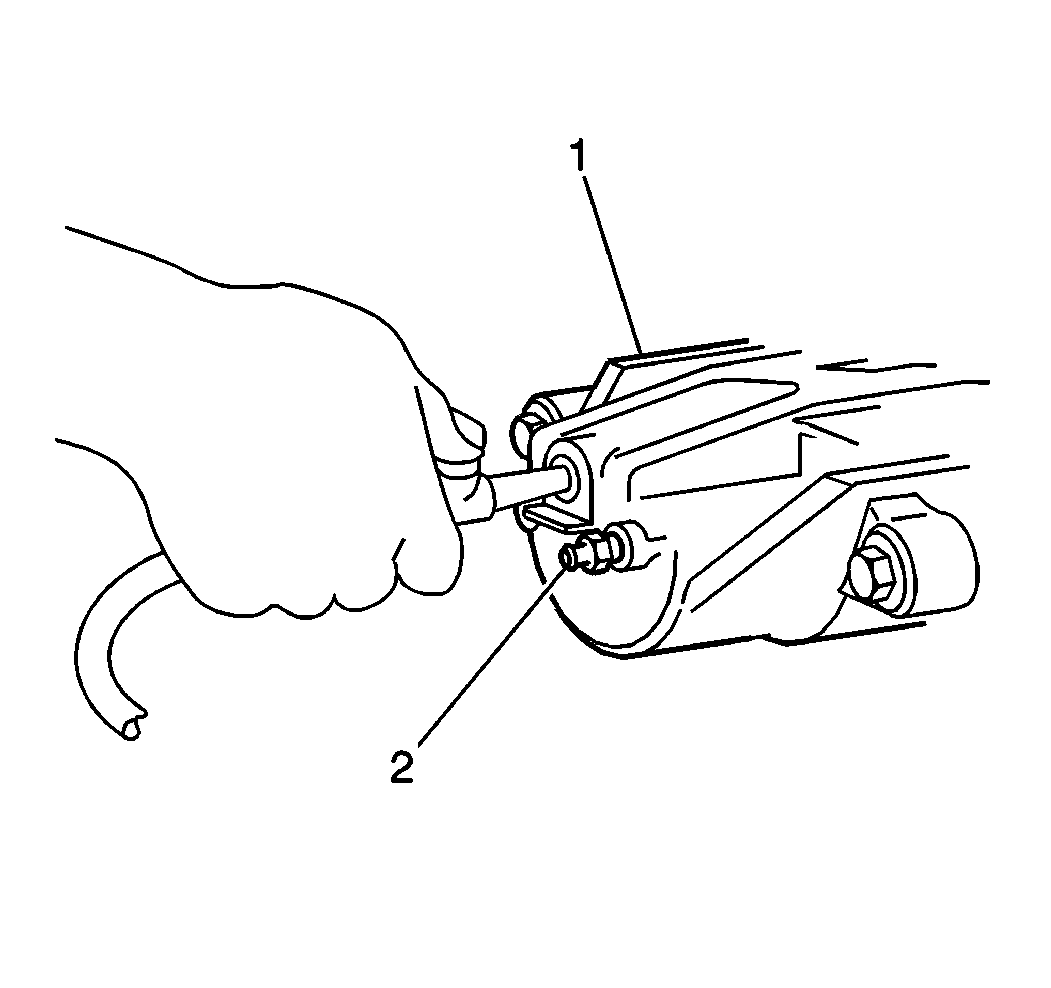
Caution: Do not place fingers in front of the caliper piston(s) in an attempt
to catch or protect it when applying compressed air. The piston(s) can fly
out with force and could result in serious bodily injury.
Notice: Use clean cloths to pad interior of caliper housing during piston removal.
Use just enough air to ease the pistons out of the bores. If the pistons are
blown out, even with the padding provided, it may be damaged.
- Blow compressed air into the brake caliper hole (1) in order to remove
the brake caliper piston. The piston will come out through the piston boot.
- Inspect and replace the brake caliper piston if any of the following
conditions are found:
| • | Worn or damaged chrome plating |
- Remove the dust boot retaining ring.
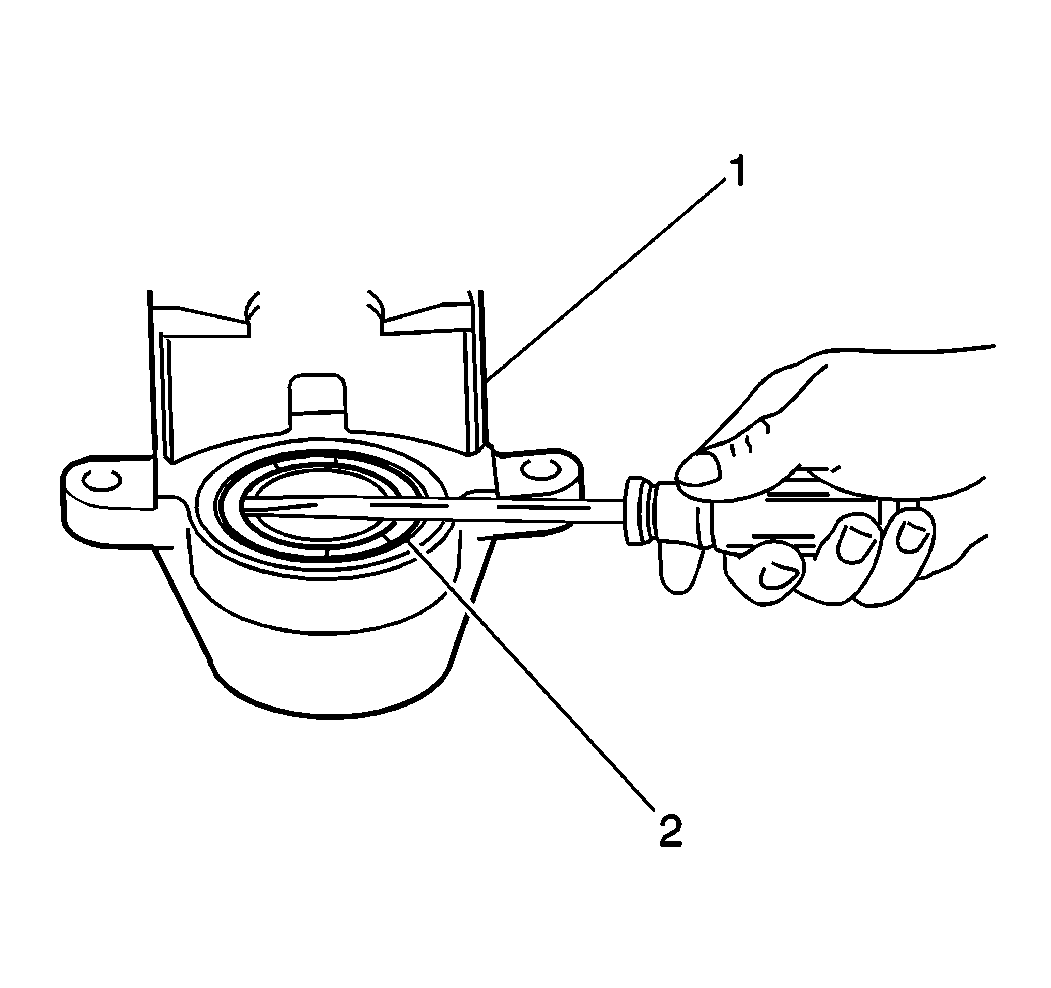
Important: Do not scratch the housing bore.
- Use a flat-bladed tool in order to remove the brake caliper piston boot (2).
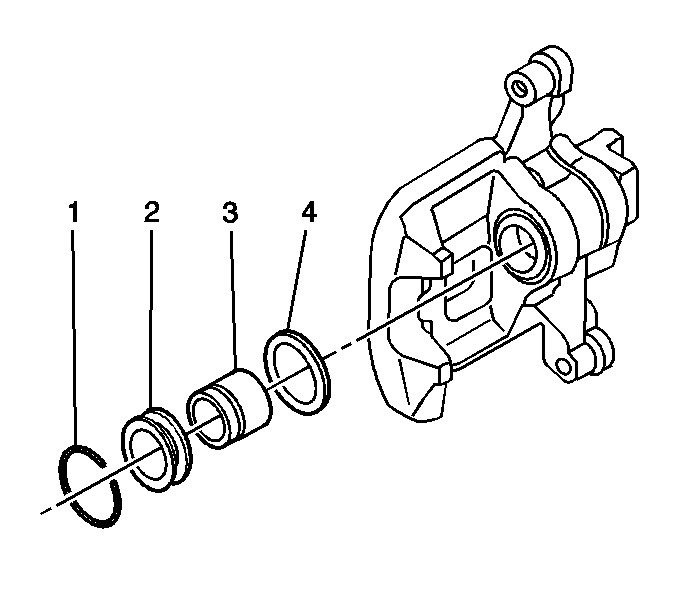
Notice: Do not use a metal tool for seal removal. Damage to the caliper bore
or the seal grooves can result.
- Use a small wooden or plastic tool in order to remove the piston seal (4)
from the groove in the caliper bore.
- Inspect the caliper bore and the seal grooves for the following conditions:
- Use a piece of crocus cloth in order to polish out light corrosion.
- Replace the caliper if corrosion in and around the seal groove cannot
be cleaned with a piece of crocus cloth.
- Inspect the seal groove in the caliper bore for nicks or burrs. Replace
the caliper if the seal groove is damaged.
- Inspect and replace any brake caliper bolt pin boots that exhibit any
of the following conditions:
Important: Do not attempt to polish away the corrosion.
- Inspect the brake caliper bolts for corrosion or damage. Replace any corroded
brake caliper bolts.
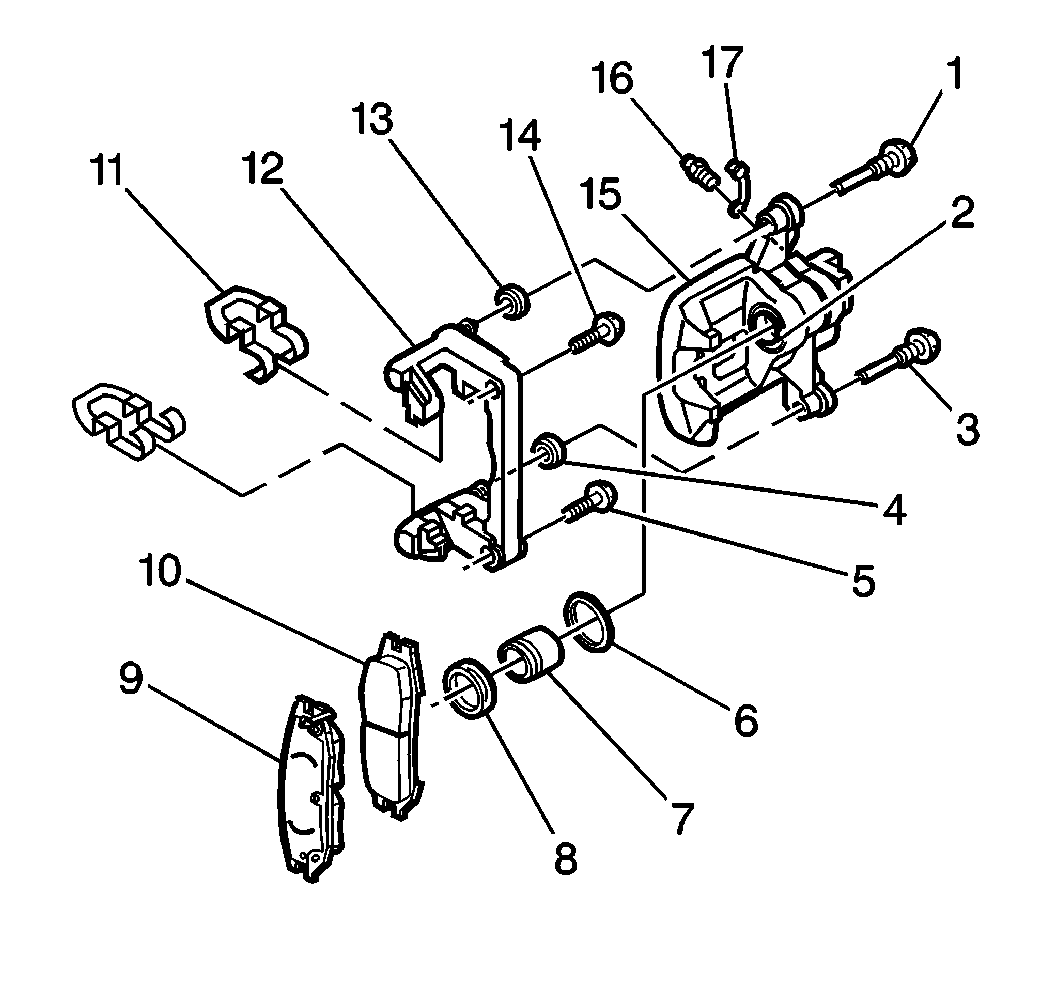
- Remove
the bleeder valve cap (17) and the bleeder valve (16) from the brake caliper housing
(15).
- Clean all the parts with clean, denatured alcohol.
- Dry all the parts with filtered, non-lubricated compressed air.
- Use filtered, non-lubricated compressed air in order to blow out all
of the passages in the caliper housing and the bleeder valve.
Assembly Procedure
- Install the bleeder valve and the bleeder valve cap to the caliper housing.

- Install a new lubricated piston seal (6)
to the caliper bore groove. Ensure that the piston seal is not twisted.
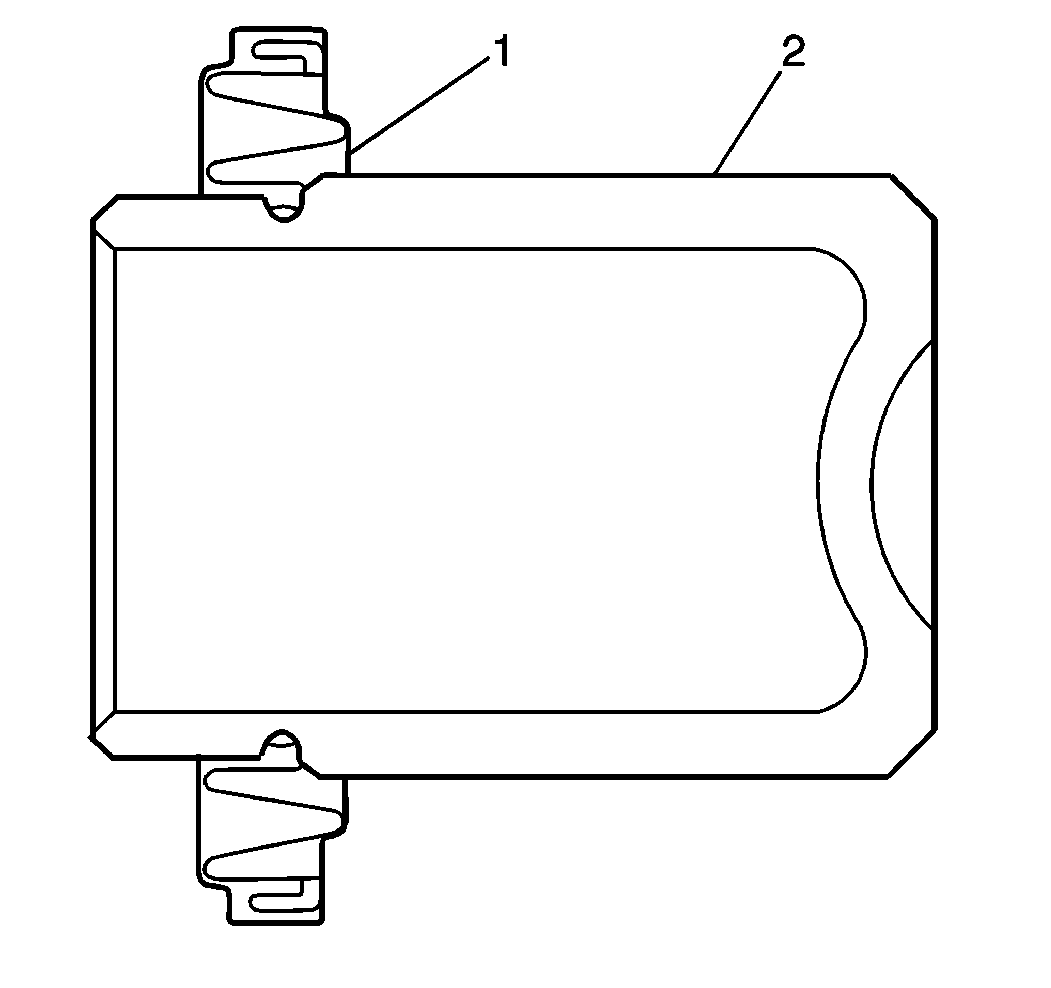
- Install the lubricated piston boot (1)
onto the brake caliper piston (2).
- Lubricate the brake caliper piston (2) with clean brake fluid.
- Install the brake caliper piston with the brake caliper piston boot into
the bore of the caliper. Push the brake caliper piston to the bottom of the bore.

- Install the retaining ring that secures
the dust boot to the caliper housing.
- Install the brake caliper. Refer to
Rear Brake Caliper Replacement
.







